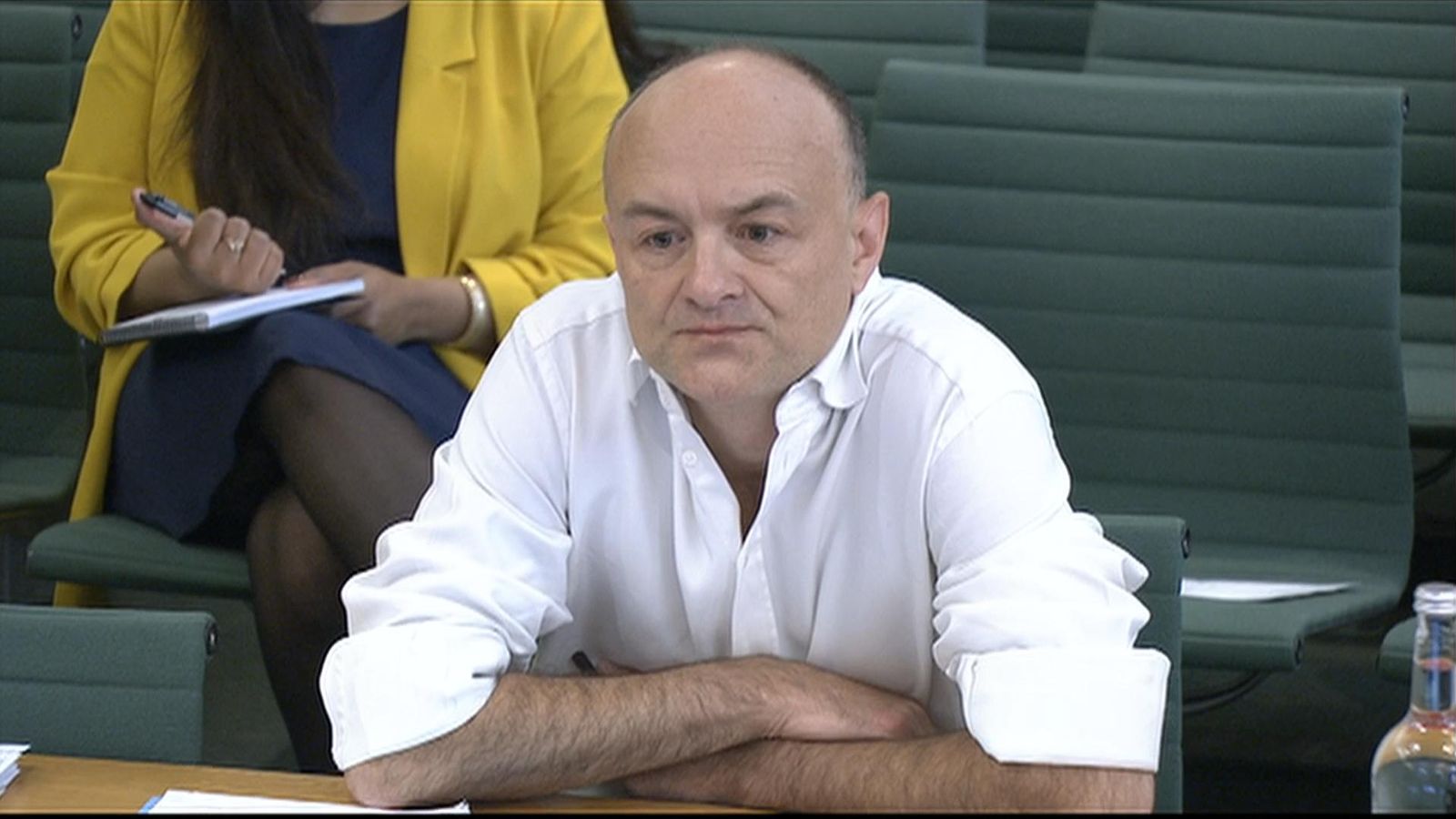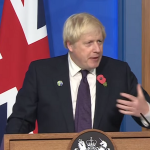Dominic Cummings, Boris Johnson’s former senior adviser, has been giving evidence to MPs about the lessons learned since the beginning of the pandemic.
The prime minister’s former aide made some explosive allegations regarding the government’s response to COVID-19, and most notably, Health Secretary Matt Hancock’s role in decision making.
But while some of Mr Cummings’s claims can be backed up with evidence, others fall just short of the mark.
Here are some of the assertions he made over the mammoth seven-hour Commons Science and Technology Committee sitting, checked against what we know.
On care homes, Mr Cummings told the committee that in March, Mr Hancock categorically promised that individuals would be tested before being discharged from hospitals back into residential homes.
He added that this did not happen and talk of a “protective shield” around the care sector was “nonsense”.
Mr Cummings told MPs: “The government rhetoric was that we put a shield around care homes… it was complete nonsense.
“The opposite of putting a shield around them, we sent people with COVID back to care homes.”
But on 17 March, Sir Simon Stevens, chief executive of the NHS, wrote to other chief executives of NHS trusts calling for the “urgent discharge” of patients to increase capacity ahead of the anticipated peak of infections.
There is no mention of care home residents being tested for coronavirus on return from hospital in the letter, suggesting it was not official policy.
It states: “Community health providers must take immediate full responsibility for urgent discharge of all eligible patients identified by acute providers on a discharge list.”
On testing, Mr Cummings told the committee the swift development of a test, trace and isolate system was hampered by Mr Hancock wanting to keep control of the process in order to fulfil his pledge of 100,000 tests per day by April 2020.
In mid-April, a “Downing Street source” made a similar point to The Telegraph, stating: “Hancock’s 100,000 target was a response to criticism in the media, and he decided to crank out tests regardless.”
They added: “The 100,000 figure was Hancock’s idea – but he made that figure up.”
On 12 March, Public Health England stopped doing contact tracing as widespread transmission had overwhelmed capacity, but SAGE minutes from 15 March suggest this was in order to prioritise tracing cases in healthcare settings.
SAGE meeting minutes from 16 April also make clear the “overall responsibility for [the testing] strategy lies with the chief medical officer” and not the health secretary.
Earlier on in his evidence session, Mr Cummings claimed the prime minister said “COVID was only killing 80-year-olds” last year while arguing against tough restrictions.
When Labour leader Sir Keir Starmer raised the alleged remark at PMQs, Mr Johnson did not address it, but said he is “confident we took decisions in the best interests of the British people”.
Mr Cummings also claimed he heard the prime minister make say “let the bodies pile high”.
Last month, Mr Johnson firmly denied saying this.
The PM’s former senior aide repeatedly claimed that “there was no data” to base COVID decision making around in the first few months of 2020.
Mr Cummings told MPs the data system on Monday 16 March was “me, wheeling in a whiteboard, and Simon Stevens reading out numbers from the Intensive Care Units (ICUs)”, adding that looking at data “didn’t really happen properly until mid-April”.
At the SAGE meeting on January 28, the government’s scientific advisers indicate that there was limited evidence of asymptomatic transmission, which corroborates Mr Cumming’s suggestion that data was limited in the first month of the year.
However, by 11 March, the World Health Organisation had raised the global threat level to “high” and classified COVID-19 as a pandemic – so some more information was available by this point.
Mr Cummings also alleged that Dilyn the dog prevented the PM from focussing on his calls for stricter measures to be introduced on 12 April.
He told MPs the prime minister’s fiancé Carrie Symonds was “going crackers” over a story which alleged she was planning to rehome their rescue dog before their baby was born.
However, the story was published on the front of The Times on Wednesday 11 March, the day before Mr Cummings suggested, with a Downing Street spokesperson having already commented: “It’s completely untrue that there are plans for him to be rehomed.”
Ms Symonds also tweeted on 11 March that the tale was “total c***”.






















